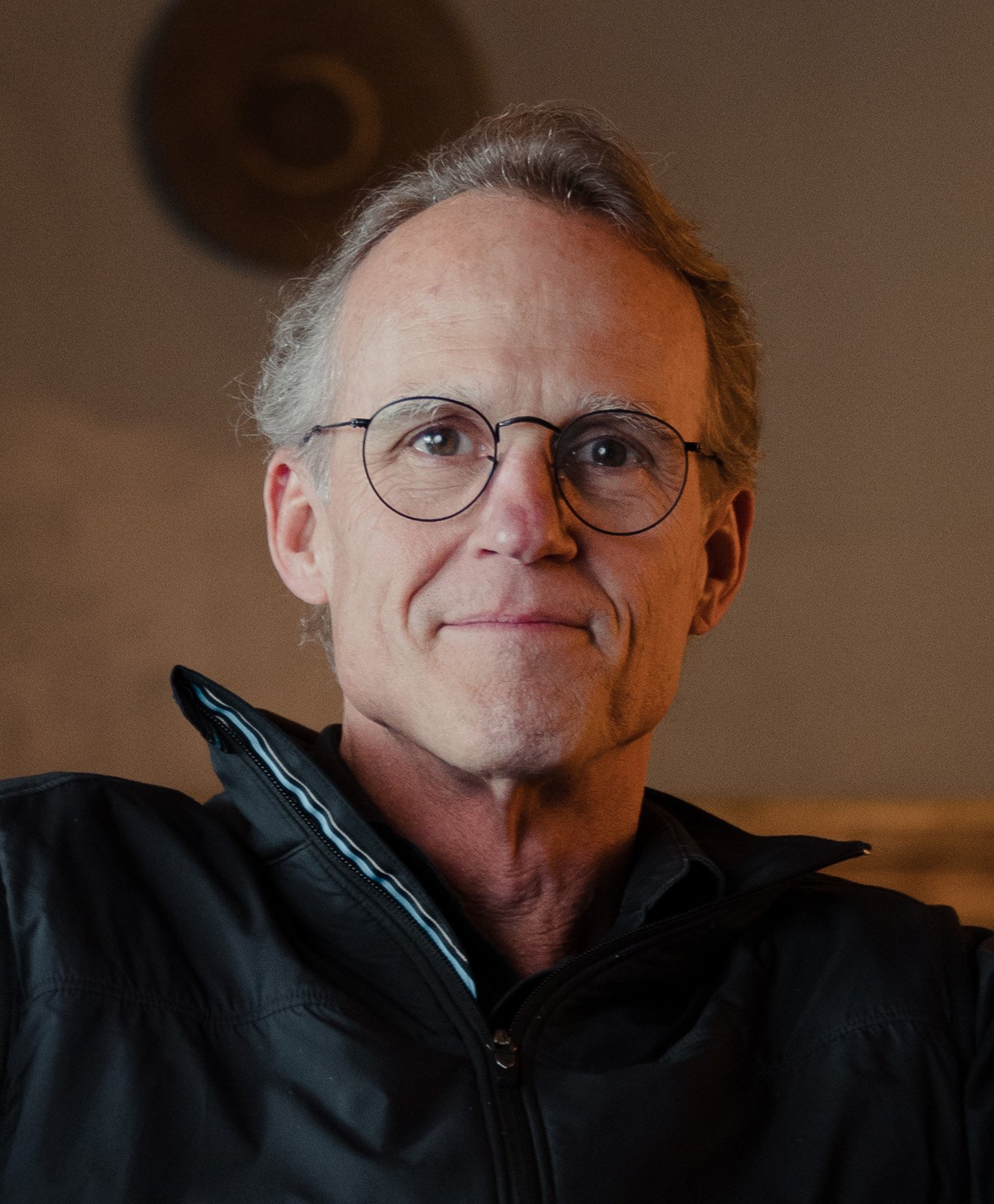Great Founders Design for Change, Not Equilibrium
As founders, we love to share our wins — funding rounds, record profits, product launches, industry-wide recognition, IPOs. But what we don’t talk about nearly enough is what comes after those successes.
We’ve all (hopefully) been there when things start to level out. The dashboards stop flashing red, cash flow is positive, and for the first time in a long time, our business feels stable. We tell ourselves, “This is it. We’ve made it.”
And why wouldn’t we feel that way? After all the building and battling, there’s often a fleeting moment when stability feels like the ultimate goal. Which makes sense — change is hard and uncertainty is uncomfortable. Equilibrium, that state of perfect balance where everything is aligned and operating with a steady rhythm, is a deeply tempting concept. It’s no surprise so many founders treat it like an end goal.
But it’s also a trap.
Because equilibrium doesn’t last — and chasing it as a permanent state can undo everything you’ve worked so hard to build. Think about it this way: If the only constant in life is change, then seeking lasting stability means working against the very nature of growth. The truth is, the chaos of daily life never disappears. Steady rhythms get disrupted, markets shift, and teams evolve.
As Shane Parrish wrote, equilibrium is “the calm in the center of the storm.” That calm is real, but it’s temporary. And if we mistake it for an endpoint, we risk slipping into the comfort of complacency, which is just another word for decline.
So let’s talk about what this means in practice. In this article, we’ll explore why the pursuit of permanent equilibrium can be dangerous for growing companies — and why great founders treat moments of balance as checkpoints, not endpoints.
Equilibrium Is A Signal, Not An End Goal
Every organization is either growing or dying. That’s the unavoidable effect of entropy. As founders, this means we’re always fighting against decline, even when we feel like we’re thriving.
This leaves us with a paradox: All systems, including your organization, naturally seek stability — but lasting equilibrium is a slow, inevitable death.
For founders who are building something new while pushing against the weight of established norms or industries, equilibrium isn’t a final destination. It’s a fleeting pause. A signal that it’s time to recalibrate before entropy takes over. Because in a world (really, a universe) shaped by constant change, the only real balance is the kind we create through ongoing adaptation.
Without a push to grow or adapt, our competitors move in, innovation happens elsewhere, and the needs of our Ideal Customers shift. That’s the tension we face as founders: Our business feels calm, maybe even comfortable, but if we stop moving forward, we risk standing still while others pass us by.
We felt this tension at Ninety not long ago. On the surface, things were solid — strong adoption, high retention, steady growth. But underneath, it was clear our high-stage customers were getting far more value from the platform than early-stage ones. That gap wasn’t glaring, but it was enough to signal misalignment with our long-term vision. We could’ve told ourselves it was good enough. But instead, we chose the harder path: rethinking our pricing model and building a mobile app from the ground up.
Yes, it would’ve been easy to stick with what was working. But we chose proactive “disequilibrium,” the kind that keeps a company alive and evolving. Because building something that matters demands more.
Great founders don’t coast on good news or rely on outdated data. They stay in tune with reality — always looking ahead, always asking what needs to change. Real balance comes from constant recalibration. That’s why equilibrium isn’t a place to land. It’s a sign it’s time to adapt again.
Disruption by Design
In The Great Mental Models, Volume 3, the Parrish and his coauthors write, “The trick is to find the right balance — to strive for equilibrium where it’s needed, but also know when to break free, to embrace the dis-equilibrium that drives progress.”
That’s exactly what great founders do. They don’t wait for disruption to find them. They introduce it. They push their teams, challenge their systems, and avoid the lure of comfort. Not just to grow, but to stay alive. Because a founder’s role isn’t to preserve stability. It’s to create sustainable cycles of growth — each one slightly different, each one preparing the organization to thrive in an unpredictable world.
We shouldn’t aim for a moment to sit back and relax. We’re builders, stewards of something bigger, a living system that must keep evolving. That’s why our Forever Agreements matter so much. They’re our Northern Constellation, our constant in the midst of change. They remind us that we’re not building toward a finish line. We’re playing an infinite game.
And our goal should be to build an organization that doesn’t just accept that truth but thrives in it.
Use Calm as Your Energy Source
Let’s be clear: Founders don’t need to fear calm seasons. In fact, we need them.
We need quiet stretches to reflect, to integrate, to let our systems catch up with our vision. Calm isn’t the enemy — it’s what allows us to breathe, to see clearly, to prepare for what’s next. But calm only works to our advantage if we use it well. If we mistake it for the end of the Work, it breeds complacency.
So how can we avoid the slide from stability into complacency?
- Stay in dialogue with reality: Keep measuring. Keep listening. Keep reviewing the data. Consistency is what separates enduring companies from those that fade.
- Maintain productive tension: Don’t ignore your metrics because they’re “good enough.” Treat every system as a prototype — stable enough to run, but loose enough to evolve.
- Revisit your vision often: The best founders return to their Focus Filters when things feel too easy or simple. They ask, “What did we set out to build?” and “Are we still on the path?” Companies endure when their vision is clear enough to steer through both calm and chaos.
Because enduring companies aren’t built by avoiding turbulence. And they’re not built by chasing it, either. They’re built by leaders who know how to appreciate the eye of the storm — without pretending the storm is over.
How to Build for Change, Not Equilibrium
So what does it actually look like to lead an organization built for change? Here are a few principles I’ve seen great founders return to again and again:
- Remember equilibrium is a mirage: Great founders build organizations that recognize equilibrium is never sustainable. (It’s a temporary state at best.) If you’re not careful, stability leads to complacency — and complacency leaves you open to entropy.
- Use disequilibrium as a tool: The best organizations don’t just weather change — they create it. That means asking uncomfortable questions, experimenting, and intentionally stretching the system. These moments build the resilience and antifragility needed to keep growing, no matter the conditions.
- Let go of the illusion of control: We pursue equilibrium hoping it’ll help us avoid discomfort. But in reality, we live in a world defined by change. Embracing this uncertainty can free us from the stress of trying to control every outcome and make us more prepared for inevitable challenges and setbacks.
- Define success as dynamic: A thriving company is never static. It questions, adapts, evolves. The healthiest kind of balance is the one that’s anchored by purpose but always ready for what’s next.
- Ground your team, even as you push: Disequilibrium drives progress, but we also need to recognize disruption can be hard on your team. We have to create a culture of deep trust, one where our people feel supported, valued, and connected to the vision. That’s what gives them the strength to grow with the company.
When we build organizations that are built for change, we stop seeing disruption as the enemy. We don’t just lead in spite of change — we lead because of it.
Disequilibrium Is the Point
Founders who treat equilibrium as a final destination are missing the point. The goal isn’t to arrive at some perfect state of balance — it’s to embrace the inherent instability that comes with building something that lasts. If equilibrium exists at all, it’s a brief pause. A moment to catch our breath before moving forward again.
When we accept this, we lead differently. We stop waiting for the calm to last and start creating systems that thrive in motion. Because our job as founders isn’t to lock things into place. It’s to keep the organization adapting and moving toward what’s next.
Because disequilibrium isn’t a threat to your company. It’s a sign you’re still in the game.



.jpg?width=500&name=large_Why_I_Love_Pig_Founders_Blog_Header_1920_x_1080%20(1).jpg)

